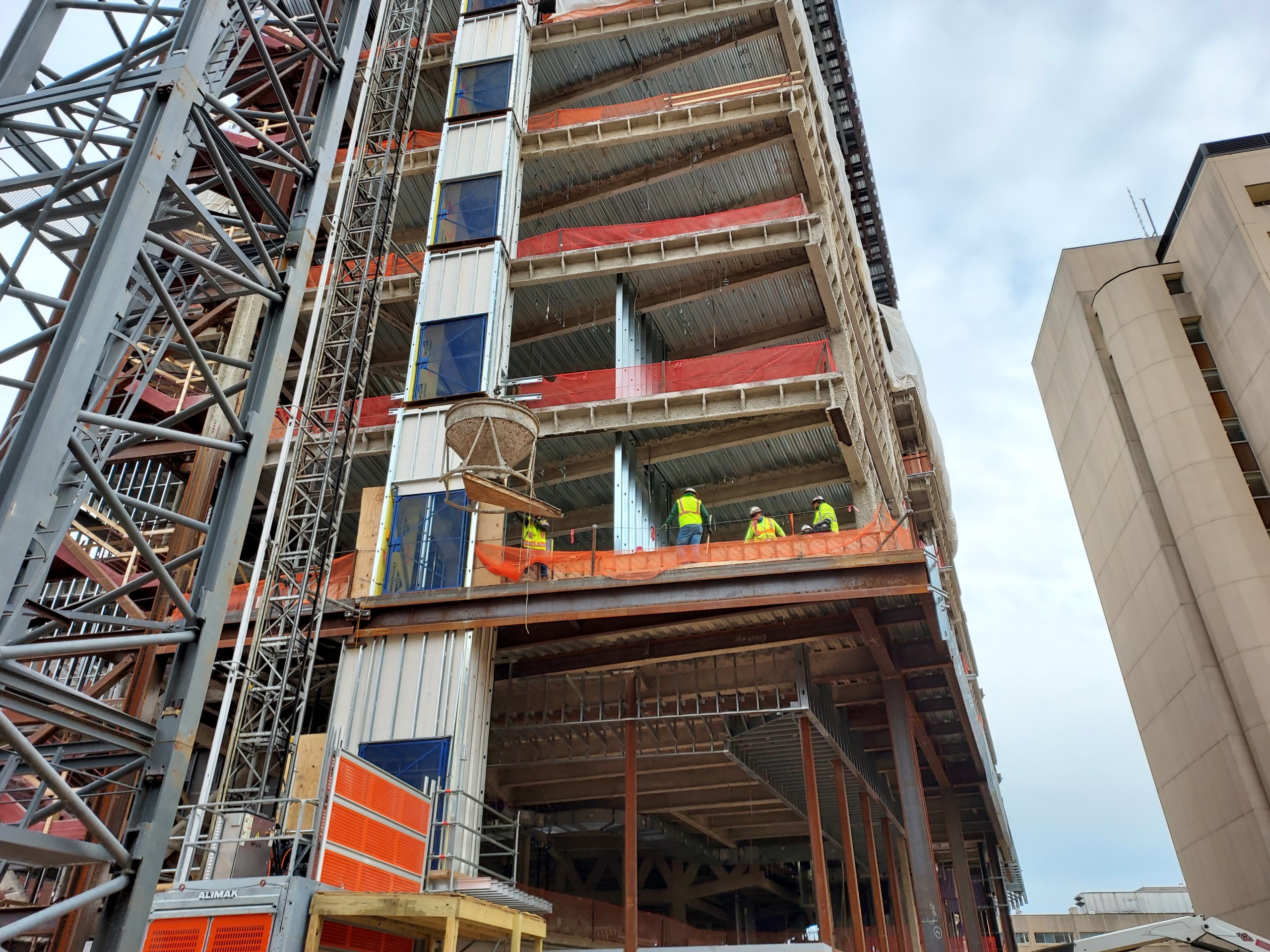F&R provided a subsurface investigation and geotechnical evaluation in support of the $90.6-million new educational building constructed on campus by UNC at Chapel Hill. The new, modern educational facility replaced the 45-year-old Berryhill Hall, which did not meet the needs of medical teaching/ learning and could no longer accommodate the increasing number of medical students. The irregularly shaped building was constructed on a concrete slab, with reinforced concrete pan and joists or skip joists, with an approximate 20,000-square-foot footprint.
Most of the new building overlaps the footprint of existing Berryhill Hall, which presented challenges in assessing subsurface conditions on this site since traditional exploration techniques (i.e., test borings) could not be performed in a large portion of the proposed building footprint. This was further compounded by the erratic soil and rock conditions typical of the Carolina Slate belt and the presence of boulders within the residual soils above the bedrock surface that are common throughout the UNC-CH campus.
F&R provided foundation recommendations based on the findings of the investigation. The team considered – but ultimately ruled out – conventional shallow spread foundations. They were not a viable support option because the variable consistency-bearing soils are not conducive to using a relatively high bearing capacity. A mat foundation was not viable largely due to the irregular building footprint. Ground improvement techniques were also not feasible due to boulders within the overburden soil. As such, the project team needed to consider deep foundations. However, most deep foundation systems (e.g., driven piles, ACIP piles, and large-diameter drilled shafts) were also not viable because of complications presented by boulders in the overburden. As a result, F&R recommended micropiles for installation in foundations through boulder-containing overburdens and into suitable bearing strata since they can effectively penetrate boulders and other obstructions in the overburden and readily extend into competent parent bedrock-bearing strata.

